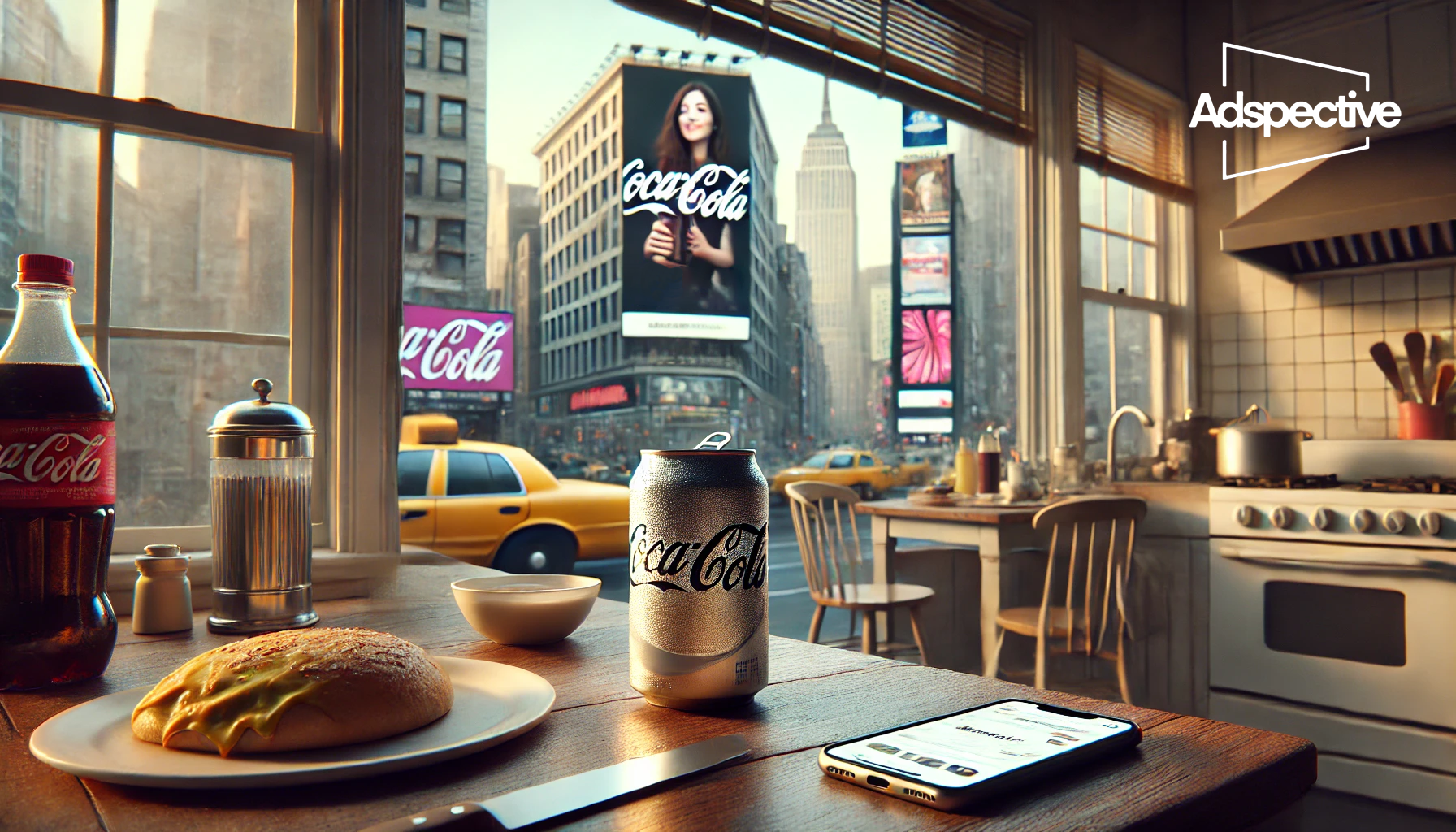
Brands have always been on the lookout for innovative ways to stand out and engage their audience, but also for ways to maximize their returns. With traditional ads becoming easier to ignore, especially with the growing popularity of ad-free platforms and ad-blockers, Virtual Product Placement (VPP) offers a fresh and innovative approach to embedding products directly into the stories audiences already love. New or existing.
VPP goes beyond conventional product placement by allowing brands to insert products into digital content after it’s produced, whether that be in films, TV shows, or even live streams. This method ensures that products blend into the narrative, creating a natural fit that enhances, rather than disrupts, the viewer experience.
How Virtual Product Placement Boosts Revenue
There is a fascinating article about virtual product placement by our friends at IBC regarding VPP that you can read right here
But let us give you our biggest takeaways
- VPP’s Market Potential: VPP is on a fast track to significant growth, with projections estimating a potential market size of $6.6 billion in the U.S. alone by 2023. This represents a massive opportunity for brands to tap into both new and existing content, as VPP enables advertisers to insert products post-production, creating a dynamic and scalable revenue stream for both content creators and advertisers
- Content Flexibility and Customization: One of VPP’s key revenue drivers is the ability to digitally customize product placements for different regions or demographics. This flexibility allows brands to tailor their advertising messages based on audience preferences, leading to higher engagement and conversion rates. As content is localized, brands can reach a more diverse global audience, significantly expanding their revenue potential
- Integration with Streaming Platforms: As ad-supported streaming services grow, VPP is becoming an essential part of the advertising mix for major platforms. With the ability to seamlessly integrate ads into content on services like Netflix and Amazon Prime, VPP allows brands to reach millions of viewers without disrupting the user experience. This non-intrusive approach is proving to be an effective way to capture attention in a crowded media landscape
By embedding products organically into the content, VPP has the potential to unlock new revenue streams for brands, content creators, and media platforms alike. Here are several ways VPP can drive revenue growth.
Reaching Global Audiences
VPP’s flexibility means brands can tailor their advertisements for different markets without the need to alter the content. A product can be digitally inserted into a scene, and that placement can change depending on the region or demographic of the viewer. For instance, a scene in a popular TV show might display a different product in the U.S. than it does in Europe.
This level of customization allows brands to connect with diverse audiences in ways that were not possible before. Brands can now speak to their audiences with products relevant to their specific region, culture, or even viewing habits, boosting engagement and sales on a global scale. This localization is key to driving more effective campaigns and reaching wider markets.
A Seamless Advertising Experience
Traditional advertisements often feel intrusive, breaking the flow of a TV show, film, or online video. In contrast, VPP integrates products directly into the content itself, whether it’s a billboard in a city scene or a soda can on a kitchen table. This creates a smoother experience for viewers, who are less likely to skip or ignore the embedded ad since it’s part of the story.
By naturally placing products within scenes, brands can connect with audiences in a way that feels organic and genuine. This helps to avoid the ad fatigue that has become common with traditional methods. Studies have shown that viewers respond more positively to ads that are woven into the narrative, and these placements often result in higher brand recall and stronger associations with the content.
Targeting the Right Moments
VPP isn’t just about where the product is placed—it’s also about when. Thanks to the data that streaming platforms collect, brands can identify high-attention moments in content where product placement would be most effective. By placing a product in a key scene, such as an emotional or action-packed moment, brands can ensure that their products are seen when viewer engagement is at its peak.
This type of contextual advertising leads to a more memorable experience for the audience. Instead of placing ads at random, VPP uses data-driven insights to select the best moments for product integration, ultimately resulting in better viewer engagement and higher conversion rates.
New Revenue Opportunities for Content Creators
For content creators and distributors, VPP opens up new revenue streams by allowing products to be placed after content is produced. This means that they can monetize content in different ways by offering multiple brands the opportunity to feature in the same piece of content but tailored to different regions or demographics.
Instead of being limited to one product placement agreement, a single piece of content can host multiple campaigns, each customized for a specific audience. Streaming services like Netflix or Amazon Prime, for example, are exploring ad-supported tiers where VPP could play a key role in generating revenue without disrupting the viewer experience.
Extending the Life of Content
One of the most exciting aspects of VPP is its ability to extend the lifecycle of existing content. Since products can be inserted post-production, brands have the opportunity to refresh older content with new product placements. For instance, a popular film from five years ago could be updated with relevant brands for today’s audience, creating new advertising opportunities for content that would otherwise remain static.
This not only gives content creators a chance to continue generating revenue from their library of work, but it also allows brands to capitalize on established hits and cult classics that still draw large audiences.
“This not only gives content creators a chance to continue generating revenue from their library of work, but it also allows brands to capitalize on established hits and cult classics that still draw large audiences.”
Emerging Trends in Virtual Product Placement
As virtual product placement continues to grow, several key trends are shaping its future and increasing its revenue potential:
Personalized Advertising
With the rise of AI and machine learning, VPP is becoming more personalized. This means that brands can insert products based on viewer preferences and behaviors. For example, two viewers watching the same show could see different products featured in the same scene, depending on their location, interests, or even their purchasing history.
This level of customization creates a more personalized and relevant experience for viewers, making them more likely to engage with the ad. Brands benefit from increased conversions because they are showing the right product to the right person at the right time.
Integration with Streaming Platforms
As more people turn to streaming services for their entertainment, ad-supported models are becoming more common. Platforms like Netflix and Hulu are exploring ad-supported tiers that offer lower subscription costs in exchange for in-content advertisements like VPP. This provides brands with premium ad opportunities to reach their audiences on the most popular platforms.
In this model, VPP can be used to offer non-intrusive ad placements that don’t disrupt the viewing experience but still allow brands to reach millions of potential customers.
Interactive and Gamified Product Placements
Another trend in VPP is the move toward interactive and gamified placements. Imagine watching a TV show where you can click on a product featured in the scene to learn more about it or make a purchase directly from your screen. This type of engagement turns passive viewing into an interactive experience, allowing brands to connect directly with their audience in real time.
This shift to interactive placements is driving higher engagement rates and direct sales conversions, creating a new revenue stream for brands and content creators alike.
Virtual Product Placement is the Future of Advertising Revenue
As traditional advertising continues to lose its effectiveness and people keep finding ways to fight back against it, Virtual Product Placement offers a fresh and powerful way for brands to connect with their audience. By seamlessly integrating products into the content people already enjoy, VPP allows advertisers to create more meaningful, less disruptive ad experiences.
For brands, this means increased visibility, higher engagement, and ultimately more revenue. For content creators, VPP offers new ways to monetize content and extend its life. As personalization and interactivity continue to grow, VPP is set to become an essential tool for anyone looking to stay ahead in the advertising world.
To learn more about how Adspective is shaping the future of product placement, where we are going to be next, and how we can help, check out our blog. or contact us directly here


